To “Native” or not to “Native”?
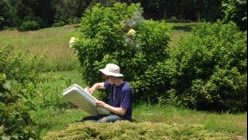
Spring 2018 Global Change Fellow, Sarah Parsons, and SE CASC Faculty Affiliate, Dr. Steve Frank, recently published the article “Effects of native and exotic congeners on diversity of invertebrate natural enemies, available spider biomass, and pest control services in residential landscapes” in the journal Biodiversity and Conservation. The following summary was written by Sarah Parsons and originally posted as a blog on the ECOIPM site here.
Your backyard is the setting for a great ecological debate, and you may engage in this debate, knowingly or not, every spring. As the weather warms and you take out the garden tools from that dusty corner of your shed, which has accumulated lifeless winter dust for months, you ask yourself, “Should I plant native plants this year? I hear they are good to plant for the bees and butterflies.” You ruminate on your question, pausing with a bit of hesitancy, because last year you planted a native spice bush and the caterpillars completely destroyed it. Do you plant native plants this year and apply pesticides on them to keep the herbivores away? Or do you plant non-native plants, which may not have as many pests, so you do not have to apply pesticides? You are conflicted. Pesticides are bad, but native plants are good. What do you do?
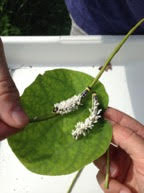
Well, as with many of life’s questions, and particularly ecological questions, the answer is not so simple. Much of the research comparing native plants with exotic plants has focused on herbivores, particularly caterpillars. Herbivores, such as many species of caterpillars, have a close relationship with their plant hosts because they share a co-evolutionary history. In other words, herbivores are well adapted to eat certain plants because they have developed mechanisms over time to avoid or sequester the plants’ defensive toxins and chemicals. This explains why the majority of herbivores can only eat a select few plants with which they have co-evolved. For example, spicebush swallowtail caterpillars eat only native spicebush, white sassafras, among a small number of other species. This also explains why many herbivores cannot eat exotic plants with which they have not co-evolved. In keeping with co-evolution theory, native landscapes have supported a greater abundance and diversity of herbivores than exotic landscapes in several studies. However, very little research has looked at how the arthropod predators and parasitoids (natural enemies) that kill herbivores, such as pest insects, are affected on native and exotic landscapes. Would arthropod natural enemies, for example, be less affected by plant origin (native or exotic) than herbivores because they are not as closely tied to plants? And, thus, would pest control services provided by natural enemies be the same or different on native residential landscapes when compared to exotic residential landscapes? Our research set out to explore such questions.
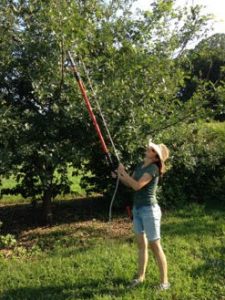
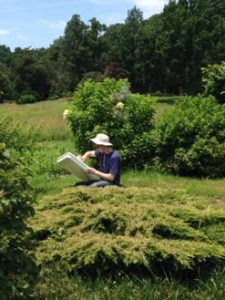
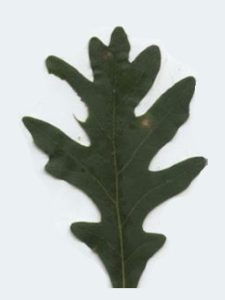
Overall, we found small differences in natural enemy diversity and herbivory but no differences in natural enemy abundance, spider biomass or pest control services.
In keeping with our predictions, native plots had greater natural enemy diversity and more herbivory (leaf area eaten) than plots with exotic relatives of native plants (exotic congener plots), albeit these differences were small. HOWEVER, spider biomass, and pest control services did not differ between native and exotic congener plots. Therefore, this may mean that the pest control provided by beneficial arthropod predators in your yard does not change if you plant exotic relatives of native plants as opposed to native plants.
So what does this all mean? Should you plant native plants or exotic relatives (congeners) of native plants this spring?
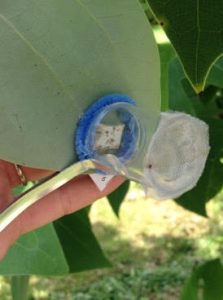
If the goal is pest control, then it would seem that it does not matter if you plant native plants or exotic relatives of native plants in your yard, at least with regard to the tree and shrub species used in our study. Alternatively, if the goal is to increase insect diversity on your landscape, particularly natural enemy diversity, then planting native plants may have a small advantage over planting exotic relatives. HOWEVER, plant choice may also be an important factor to consider. For example, both native and exotic oaks supported some of the highest diversity of natural enemies in both years. Oaks, both native and exotic, are widely known to support high biodiversity. Thus, as a homeowner, if you want to increase diversity on your landscape, maybe consider planting an oak instead of a maple. Consider not only plant origin but also consider which plants support the greatest insect diversity.
Our study highlights another consideration for the homeowner: available biomass. Biomass available in the form of plant material or insects is important for supporting birds and wildlife in all ecosystems, including urban ones. Our finding that herbivory was greater in native landscapes may suggest that more vegetative biomass was being consumed and supporting more birds and wildlife within our system. HOWEVER, spider biomass did not differ between native and exotic congener landscapes. Spiders, in addition to caterpillars, are great bird food. In reality the difference in herbivory between native and exotic congener landscapes was small in our study, and may suggest that not much is gained in available biomass by planting native plants versus exotic congeners. However, we may also conclude that some plant species, such as Hydrangeas in our study which supported the most spider biomass, may be better than others in the spider biomass, aka bird food, they support for birds and other wildlife, just as some plants species are better than others in the caterpillar biomass they support.
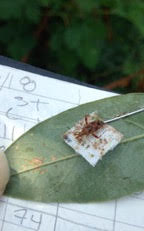
What our study did not explore is how landscapes with native plants compare to landscapes planted with exotic non-relatives. For example, we did not compare a landscape planted with native oaks and native maples to a landscape planted in exotic crape myrtles and gingko trees. Given what we know from previous work on herbivore communities, we would expect to see a larger difference in insect diversity and abundance between these two types of landscapes. In such a scenario, plant origin may play a more important role in maximizing pest control services and/or supporting insect diversity. However, future work will need to explore how these types of landscapes differ in the natural enemy communities they support.
You consider this blog post as you walk out to your shed for the second time on a nice spring morning, you open the shed, reach for the tools, and find yourself immobilized by anxiety. You still have no idea what to plant, and you are more confused now than you were before! The reality is that how we support healthy urban ecosystems in our backyards is confusing and often more complex than “native” or “not native.” Plant choice, plant structure, plant density, plant diversity, among many other factors is also important. The best we can do is read as much of the latest research as we can, be good stewards, and try our best. So yes, go ahead and plant native plants this spring. But at least hopefully now you can feel a little less guilty about planting that English Oak you were eying in the garden store the other day.
- Categories:
